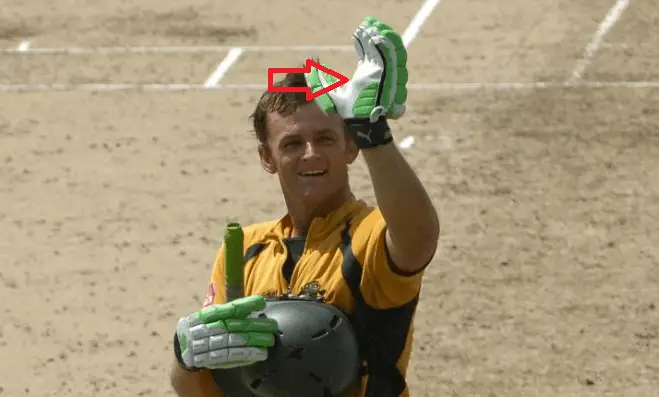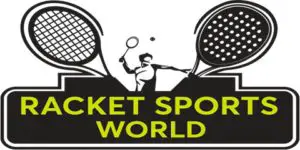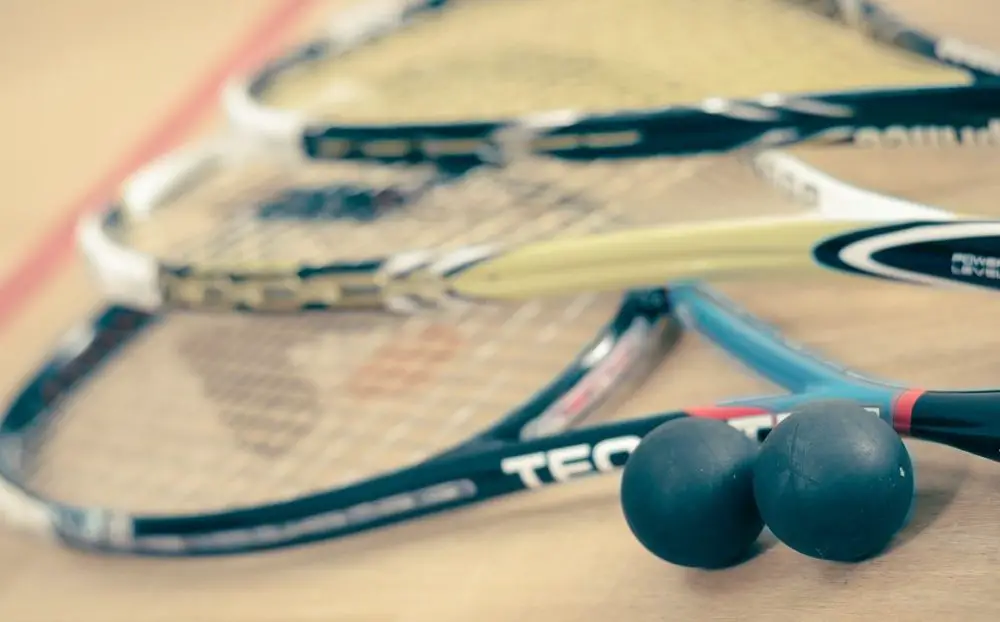If you are starting out your journey as a squash player and want to understand about the different aspects of a squash ball, it’s all here. Right from a squash ball’s size to its colors and the purpose of those colors, its types to its cost, weight and various other factors to consider before you buy a ball, you will get it all in this squash ball guide below.
Table of Content
What’s a Squash Ball Weight?
Depending on the type of a squash ball which is required, it weighs anywhere between 0.8 to 0.9 ounces or 23 to 25 grams.
What’s a Squash Ball Size?
A squash ball has a diameter of 39.5 and 40.5 mm, which is around the diameter of a table tennis ball (currently at just over 40 mm). Depending on the level of players, different squash balls have different sizes.
Check the section for types of squash ball below for a deeper explanation.
What is a Squash Ball made of?
Squash balls are usually made of rubber, more specifically raw butyl rubber along with other natural and synthetic materials mixed with the rubber.
A squash ball also consists of air inside it which is a key component in helping absorb energy, convert into heat which helps expand the rubber and to aid the ball become bouncier as play goes on.
This is, in fact, an important aspect about a squash ball – it needs to be warmed up nicely before it starts bouncing as much as it’s supposed to. It’s also explained in the sections below.
Also Read:
Squash Ball Types
There are different types of balls used in squash, and it depends on the weather, atmospheric conditions and the level of play (experience) on offer. Different types of squash balls are denoted by the colored dots on them, with the color of the dot signifying its use for what level of play and the bounce associated with the ball.
A typical ball has double-yellow dot, yellow dot, red dot and a blue dot which are an indication of the speed of the ball and the bounce and therefore who should ideally be using them.
For instance, a blue dotted ball bounces the most and is quicker as well, which is more suited for beginners or juniors. Red dot signify a medium-level player with the ball speed being medium and bounce being high while a yellow dot is for slow speed and low bounce and advanced-level player.
At the highest level of the game, in the professional tournaments played by some of the best players in the world, the ball used is double-yellow dot which plays at an extra slow speed and doesn’t bounce too much.
There is another variety of balls used in squash, dotted with the orange color, and that’s for play at significant heights above sea-level.
What is the difference between slow and fast-paced balls in squash?
The name of the aforementioned balls should be self-explanatory regarding their behavior but the one other factor to consider with slower balls is they lose their bounce very quickly in court corners as opposed to bouncing up for the players. This makes it tougher for the players and hence used only at the pro level of squash.
What about Dunlop Squash Ball types?
Dunlop balls are made using a similar methodology to mark them for their speed and other conditions. There are four basic types of squash balls manufactured by Dunlop for the senior level; Intro, Progress, Competition and Pro.
The Intro level ball is similar to the blue dot one explained above and it possesses 40% more bounce than the one used at the highest level (Pro). The red dot, also called the Progress, has 20% more bounce, while the single yellow dot (Competition) has 10% more bounce that the Pro ball.
The size of the ball is also dependent on which level it’s been used for; the Pro and Competition balls have the same size, while the Progress ball is 6% bigger than the previous two and the Intro ball is 12% bigger.
There are two juniors ball as well, namely the Mini Squash Fun ball and the Mini Squash Play, used by 5-7 year-olds and 7-10-year-olds respectively.
Why Should Squash Beginners Not Play with Pro Balls?
As mentioned earlier, squash balls bounce differently based on the level for which it’s made, beginner level or pro. At the pro level, the bounce is low unless the balls are warmed up properly and that usually happens only when it’s hit hard the first few minutes and continued to be hit at pace.
At the beginners’ level, it’s tough to sustain that kind of hitting, which means the balls might not be warmed up properly and not bounce too high. Rallies are tougher to sustain and as a result, beginner squash players would be easily put off thinking the sport isn’t meant for them.
Squash Ball Colors
The color of the dots on a squash ball are indicative of the pace and bounce as mentioned earlier, but there could be minor tweaks in what a color represents between brands.
While generally speaking a double-yellow ball would be used at the national and international level in squash, it’s important to check beforehand what each color implies for that particular squash ball brand.
Also Read:
What are the Squash Ball Dot Ratings?
This is the same as the squash ball color, used interchangeably. While the color of a squash ball used at the senior level is black there are colored dots on the surface to signify the bounce of the ball and the speed of play.
- Blue Dot: Ball with Very High Bounce (about 40% more than Pro level), Fast Speed of Play and used by Beginners
- Red Dot: Ball with High Bounce (about 20% more than Pro level), Medium Speed of Play and used by Medium-Level Players
- Single Yellow Dot: Ball with Low Bounce (about 10% more than Pro level), Slow Speed of Play and used by Advanced Players
- Double Yellow Dot: Ball with Very Low Bounce (Pro level), Very Slow Speed of Play and used by Experienced, National and International Players
Squash Ball for Beginners
If you are just starting out but not playing at a junior level – i.e. you are above the age of 10 – it makes sense to kick-start your squash career with the bouncier blue ball. It would allow longer rallies and in turn, help improve your game.
As you get better, move up to the red ball and then single-dot yellow ball but avoid using the double-dot yellow. This is because of the manner in which it behaves when not warmed up properly. The lack of bounce would end rallies prematurely and that can never be good for your game.
If you are less than 10 years old, go for the Mini-Squash ball instead. It is specifically designed for junior-level squash.
Squash Ball Bounce Height v Temperature
There is a direct correlation between the bounce one can extract from a squash ball and its temperature. Hotter the ball, higher is the bounce and vice-versa. Squash players at the national and international level use the two-dot yellow ball and need to warm it up well before they begin bouncing a lot more during the game.
If you are looking to understand this in a lot more depth, you can check this piece here, which scientifically explains the reason behind it. However, it you are looking at a quick gist of the reasoning, here’s how it works:
According to the Ideal Gas Law, temperature (T) is directly proportional to the product of pressure (P) and volume (V) of a body. So as the temperature goes up, the pressure also rises and that in turn inflates the ball causing it to bounce more. The other reason why the ball bounces more is because at higher temperature, the ball’s elasticity also increases, and that imparts the extra bounce in the squash ball.
Squash Ball Dimensions
At the highest level of competition, i.e. at the domestic and international squash level, the ball dimensions are as follows:
- Diameter: 39.5-40.5 mm
- Weight: 23-25 grams
However, for squash players who are looking to play at other levels; right from junior to beginner’s, the feel of the ball varies, as it becomes more elastic and bouncier.
And it’s very important for players to choose a ball suited to one’s own level of play, because, as mentioned earlier, unlike most other sports, it’s very tough for a beginner to play with a squash ball that’s meant for professionals.
At the junior’s level, the ball is slightly bigger and heavier which allows players to get used to it and enable longer rallies.
Squash Ball Prices – How much do Squash Balls Cost?
Prices fluctuate every year, so we can only provide you with current prices, as on May 2020. Currently, a Dunlop Double-Dot Pro squash ball costs $40 for a box of 12, while there are other variants like 3-ball pack or a 3-ball tube which are also available.
To get a more fair idea of the current squash ball cost, you can click here and verify with Amazon. This will give you the price of not just the Pro ball but also squash balls at various levels of the sport starting from junior.
Squash Ball Machines
A squash ball machine is helpful for a player to practice on his/her own when there is no partner. More information on how a squash ball machine works can be found in a separate article here, but to give you a basic idea, this is how it looks.
Interesting Trivia and Facts about a Squash Ball
Squash Ball Cut in Half
A squash ball cut in half can be used as noise damper. The double-dot yellow balls have suitable softness to allow it for vibration dampening. Users have found squash balls to help reduce the vibrations of printers, reducing the noise to almost nothing and made the printer silent.
Squash Ball in Cricket
Australian cricket team wicket-keeper Adam Gilchrist used a squash ball inside his glove in the 2007 World Cup and scored a match and tournament-winning century. The squash ball helped him maintain a hold on his bottom hand instead of allowing it to move too much around his bat grip.

Squash Ball Maximum Speed
The maximum speed recorded on a squash ball is nearly 282 km/hr or 176 miles/hour by Australia’s Cameron Pilley in 2014; smashing two services at around those speeds.
And if you want to understand how it feels to be hit on your back by a squash ball moving at that speed, here’s how. Watch the video till the very end and we would be very surprised if you would still want to try it out at home (please don’t!).


